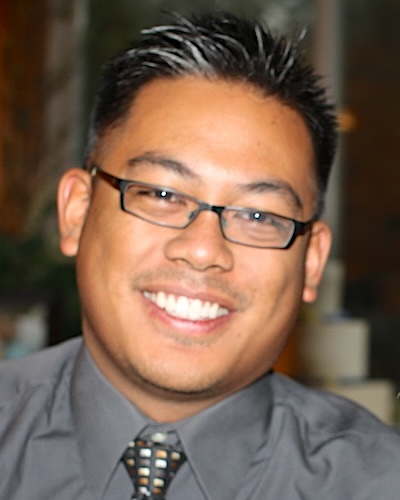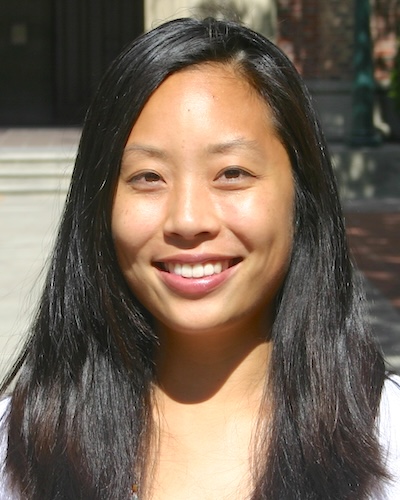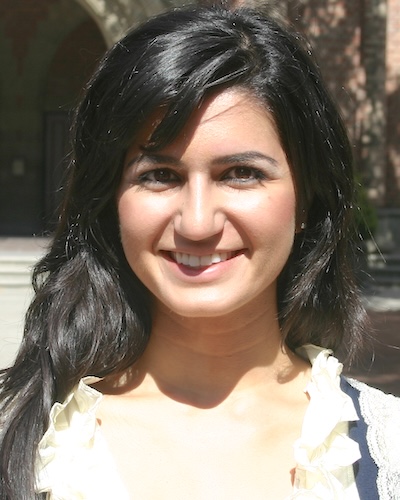Student Blog

Fall semester is done! ⟩
December 14, 2010, by Pierre
Beginnings and Endings Classes Community
It truly has been a great experience here at USC. I can just remember the first summer semester like it was yesterday . . . and now, I have 1 more semester to go and 1 more fieldwork to experience and then almost done! Can’t say I’m looking forward to comprehensive exams at next year or studying for the NBCOT exam, but I’m happy to have gone to USC for my education. They say all education is the same — in the end you get the same degree, but with the debt is the main difference.
It’s true, that USC didn’t have the lowest tuition among the schools I was applying to last year, but I can say that all the classes, the teacher interaction, the scholarships available, the resources abounding, the OT history among our hallways, the career positioning within the city, the diverse/international fieldwork affiliations, the networks you create, the USC name behind the degree, and the overall supportive culture among the students and faculty are beyond tuition costs. It’s one thing to base an education on financial costs vs quality of education . . . USC puts student learning first and really seeks to prepare us for the real world of OT.
⋯

Interdisciplinary Communication ⟩
December 6, 2010, by Yao
Community Getting Involved What are OS/OT?
The importance of interdisciplinary communcation and engagement.
This past weekend Amanda and I were a part of an interdisciplinary health fair put on by Keck Medical School at one of the local high schools. It was a great opportunity to learn about the other members of a potential medical team and interact with the community.
One fact that I found fascinating was that although a lot of the participants were medical school students, pharmacy students, physician’s assistant students and physical therapy students, many weren’t really sure of what occupational therapists did and to what extent. On the same side we weren’t aware of the full breadth at which these groups also participated in patient care, so it turned out to be an amazing learning experience on both ends. It’s important to have more events that include the different members of a potential team.
I have to admit that Amanda and I had a hard time thinking of what to say when the other disciplines asked what exactly it was that we did as occupational therapists. It wasn’t because we weren’t sure, it was the fact that there were so many ways that occupational therapists went about treatments depending on the situation and patient. We weren’t sure how to give an in-depth understanding including all the different capacities at which and occupational therapist could work. Finally, we decided to use the sensory integration station that we had set up to help open up discussion about the role of occupational therapists. The station consisted of two large Tupperware containers, one full of black beans and the other with lentils. Buried inside each container were little miniature animals (Polly Pocket sized) and the goal was for the participant to find as many animals as possible with their eyes closed. Skills such as touch discrimination, stereognosis, maintaining attention, and standing balance were all used in this one activity. It helped the other professions understand that occupational therapists used meaningful activities and in this example of a pediatric client, play would be their meaningful occupation as a way to work on developing skills to help them engage more successfully with the environment. It was the most popular activity at the fair and gave us an opportunity to talk about occupational therapy and for the participants to understand through hands-on experience what occupational therapy can do. I’m so glad we had the opportunity to participate and get to know about all members of a potential interdisciplinary team and I’m looking forward to future mixer events.
⋯

Occupational Justice ⟩
November 9, 2010, by Pierre
What is occupational justice? Is it like social justice? Kind of. Social justice may look at making opportunity equal to all to reduce differences; occupational justice looks at the unique differences of individuals and groups and how to help them access opportunities as they relate to occupations. It’s interesting to be learning more about how occupational therapy goes beyond the clinics and pervades our society, our culture, politics, and so on. OT in Occupational Justice attempts to meet the unique needs of the individual in order to access the opportunity of health through occupation.
Do you have a passion to help others and to help them access their natural need and desire to ‘do’ activities, to live life, and to be a part of our society? Occupational therapy is a field that is present in many different areas — this is a sign of OT’s strength. Our profession pervades so many aspects and it’s due to the great importance that people need and want to do occupations-activities-life. We seek to help others improve and access a quality of life that is rightfully theirs within a diverse culture such as ours.
⋯

The Influence of Language ⟩
November 8, 2010, by Yao
Language is more than just what you say and it is important that we enable rather limit in our occupational therapy dealings.
I recently attended a charity event that was geared towards promoting awareness of an issue that has affected countless women across the globe, sex trafficking. Attending this event re-enforced the idea that language is a powerful form of expression and can truly affect the way that one presents oneself as well affect how people view and treat others. The event itself although well intentioned employed a host that seemed to be ill informed about how to properly address the issue of sex trafficking and those that have survived it and are affected by it. In my opinion, the host should have been using language that empowered the women affected and placed them in a positive light as survivors but instead used language that marginalized these women as “damaged” people that had “chosen” this life and they were not able to help themselves. The language that was used placed these survivors in a category of disempowerment as well as subordination, instead of encouraging a new life full of opportunities the language seemed to permanently remind them of their traumatic past and permanently place them in a subordinte position to everyone else. Comments such as “I have nothing in common with these people” and “we help these people live the right way” were made. Instead of raising awareness and increasing empathy, it seemed to further differentiate and marginalize, placing those that have not experienced the effects of sex trafficking in a more highly regarded place in society. It seemed as if the language was solely identifying this population through a label rather than their individual characteristics — as if dehumanizing the already dehumanized. Instead of teaching acceptance and expressing “awe”; in the strength and endurance of these women, the language seemed to imply that they had been a part of something that they should be ashamed of and that the organizations hosting the event could help them assimilate into mainstream society. Not once did it speak of the strength of these women, not once did it emphasize their adaptability, and not once did it promote their individuality. They were seen as a part of a group that needed help: victimized women — no more, no less.
In occupational therapy there is a concept that is used when addressing the various populations that we work with and it’s called person-first language. Person-first language is an important tool to be conscious of not only as an occupational therapist but as a citizen of the world as well. By definition:
. . . people with disabilities be identified first as individuals. “Person First Language” — referring, for example, to a “woman who is blind”; rather than to “a blind woman” — is a form of political correctness designed to further the aims of the social model by removing attitudinal barriers. (“Definition of Disabilities”, 2010, disabled-world.com/disability/types)
It should also be recognized that some times person-first language is not preferred depending on the person you’re talking to but for this event in particular I felt that person-first language would have been a more appropriate choice of language, focusing on the abilities and opportunities that these women do posses and focusing on their ability to engage in life and obtain a quality of life that is most beneficial and satisfying to them.
I in no way mean to imply that these organizations didn’t help these women. These organizations are great resources and provide many supportive services. It was the language used by this particular host that had altered my view of this event. It only took a few words to change the mood of that night. Imagine what a few words can do to a person. As much as people play with language in politics and law, it is extremely important to consider how it can affect both patients and providers in the medical sphere. A label, a category and a group all have certain connotations and many of those connotations can limit someone’s potential. Occupational therapists understand that our clients are constantly changing throughout treatment and therefore find it important to be cognizant of the language used to address patients and their situation. Words can either be a vehicle for positive change or a powerful tool to stop it. We should think twice about the language we use.
⋯

What makes USC’s program unique? ⟩
November 8, 2010, by Helen
Community Fieldwork Getting Involved International What are OS/OT?
The professors at USC support your learning in every way possible.
In the past couple weeks, I have held information sessions at UC San Diego, UC Davis, Sacramento State, and UC Berkeley. I am constantly being asked why I chose USC’s program and what makes USC’s program unique. From holding these information sessions and meeting so many ambitious and passionate future applicants I have had the opportunity to reflect more on the profession of Occupational Therapy. I have also had time to reflect on how attending USC’s program has influenced my professional future and outlook about the profession. The faculty at USC has such immense confidence in their students and provide the support for their students to not only be great clinicians, but to be leaders in their profession. This investment in the students is what has made my learning experience as a graduate student so unique.
In the last year, I have been provided with the opportunity to attend Lobby Day in Sacramento, advocating for Universal Health Care. Additionally, I was given the opportunity to do an international fieldwork in Ghana. I have also had the opportunity to attend OTAC conference in Pasadena, AOTA conference in Florida, as well as the student conclave in Kentucky. Attending these events, networking with current practitioners and leaders in the field, and learning what direction research is moving towards, have intertwined to inspire me about my profession. I am so proud to be an Occupational Therapy student at USC and am so grateful for being able to attend a university where the faculty truly supports your learning. The professors and faculty hold a holistic view of their students, emphasizing that it is not only valuable to be an excellent student doing well academically, but it is equally valuable to gain practice experience, leadership experience, research experience, and to be knowledgeable about the theory behind practice. By valuing all these learning components, I have a strong sense of the history of my profession, where we stand currently in our health care system, and what needs to be done in the future. The field of Occupational Science was founded at USC, Jane Ayres was a professor at USC researching Sensory Integration techniques, Lifestyle Redesign was established at USC, and our dean Florence Clark is the president of the AOTA. So to answer the question of why I chose USC and why I feel USC is ranked so highly for our OT program, I feel that it is because all these elements combine to create passionate practitioners who think broadly about the field of Occupational Therapy.
⋯





